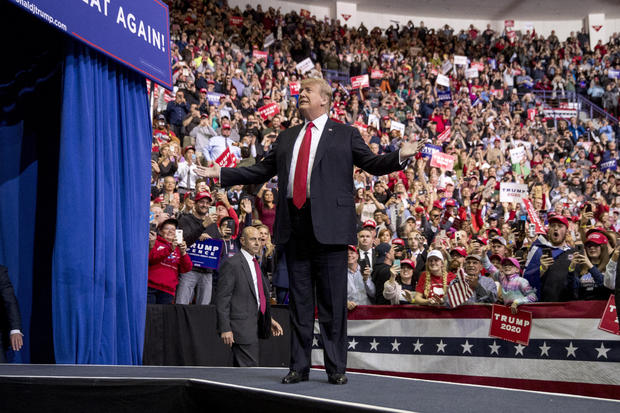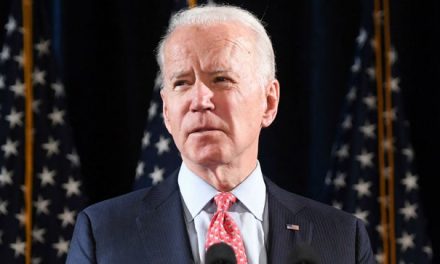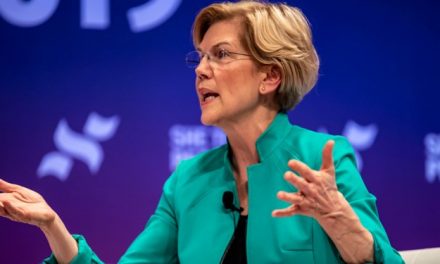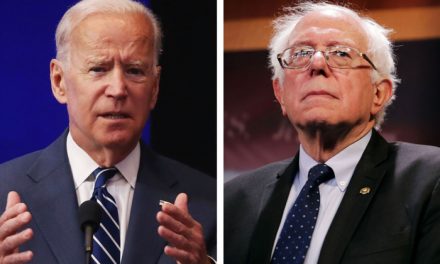Image Credits: ANDREW HARNIK / AP.
At Roll Call, Stu Rothenberg revisits the 1996 campaign when congressional Republicans deliberately adopted a late strategy premised on the idea that Bob Dole was going to lose. It’s a reminder that Dole actually finished much better than the polls had predicted. But it’s also something the House and Senate Republicans might want to attempt again in 2020.
The popular vote finished with Bill Clinton winning by 8.5 percent which, even taking into account Ross Perot’s late entry into the race, was far closer than the polls had predicted.
Gallup’s June 18-19 two-day rolling average showed Clinton leading by 19 points, 57 percent to 38 percent. A July 25-28 three-day rolling average found Clinton ahead by 18 points, 57 percent to 39 percent.
Labor Day didn’t fundamentally change the shape of the race, which included businessman Ross Perot running again as an independent.
A Sept. 10-12 CNN/USA Today/Gallup tracking poll of likely voters showed Clinton leading with 55 percent, followed by Dole (32 percent) and Perot (6 percent).
Throughout the fall, Dole gained a few points and then lost them, but the Republican challenger never changed the contest’s trajectory.
For example, on Oct. 14-15, the race allegedly “closed” to 9 points, 48 percent to 39 percent, with Perot at 5 percent. But just a few days later, Oct. 18-19, Clinton was back up by 19 points, 54 percent to 35 percent, with Perot at 6 percent.
The actual tally was Clinton (49 percent), Dole (41 percent), and Perot (8 percent), so the mid-October poll was not too far off. Yet, precisely because Dole was generally measuring about 20 points behind, his Republican colleagues who were sharing a ballot column with him decided to campaign as a check against Clinton’s second term power.
Weeks before the 1996 general election, operatives at the Republican National Committee and National Republican Congressional Committee urged GOP campaigns to adopt a last-minute, new strategy.
As New York Times reporter Adam Clymer wrote, they urged “their party’s Congressional candidates to cut loose from Bob Dole and press voters to maintain a Republican majority and deny a re-elected (Bill) Clinton a ‘blank check.’”
“If Clinton is re-elected, heaven forbid, the last thing the American people want is for him to have a blank check in the form of a liberal Democrat Congress,” RNC Chairman Haley Barbour said in the article.
To the dismay of Dole campaign strategists (who understood the new message amounted to an admission that their candidate had no chance), Republican operatives did embrace that “no blank check” message, even investing what one longtime operative now calls “a lot of money pushing that message in the mail.”
As Rothenberg points out, for several reasons it won’t be easy to repeat this strategy. The most important impediment is that Trump is an incumbent president and has far more power over the party apparatus than Dole ever enjoyed. But almost as important is the fact that Trump is far more popular with the Republican base than Dole was, and he’s also almost immeasurably more popular than the party leaders in Congress. For example, a recent YouGov survey found that 87 percent of Republicans approve of Trump’s job performance, while only 63 percent gave good marks to Mitch McConnell. Among all voters, the difference was almost as stark, with McConnell getting the thumbs up from only 26 percent compared to Trump’s 40 percent.
Gallup polling tells much the same story, with the latest congressional approval survey showing a brutal 25 percent to 71 percent approve/disapprove result. That makes their finding that Trump currently has a 38 percent approval rating look good by comparison.
For these reasons, it’s highly doubtful that we’ll see the Republicans openly adopting a strategy based on blocking Joe Biden’s power once his assumes that presidency. But it also raises the interesting question of what will remain of the Republican Party once Trump leaves the scene. Three of the last four congressional preference polls show the Democrats at or above 50 percent, leading anyway from 8 to 13 points. Meanwhile, a lot of the McCain/Romney base has already crossed over to support Biden. Suburban Republicans are becoming as rare as rural Democrats. The congressional Republicans’ theory is that “between one-third and one-half of Trump voters have little allegiance to the Republican Party” and “like him because they don’t see him as a Republican.” How many of them will be sticking with the GOP when someone else has taken up the banner?
On the one hand, with Trump on the sidelines (or possibly in a New York State prison), he’s be less able to destroy the careers of moderate Republicans. On the other hand, how many Republican voters will be left if Trump’s hordes splinter after he’s gone?
If Trump falls further behind in the polls, we may see some candidates create some real distance from him, but not at the direction of the NRSC and NRCC. We also shouldn’t trust that he’ll really lose by twenty points even if the polls predict that outcome. But when the dust all settles, assuming Trump doesn’t pull off another miracle, there is going to very little of the GOP left to pick up the pieces.







